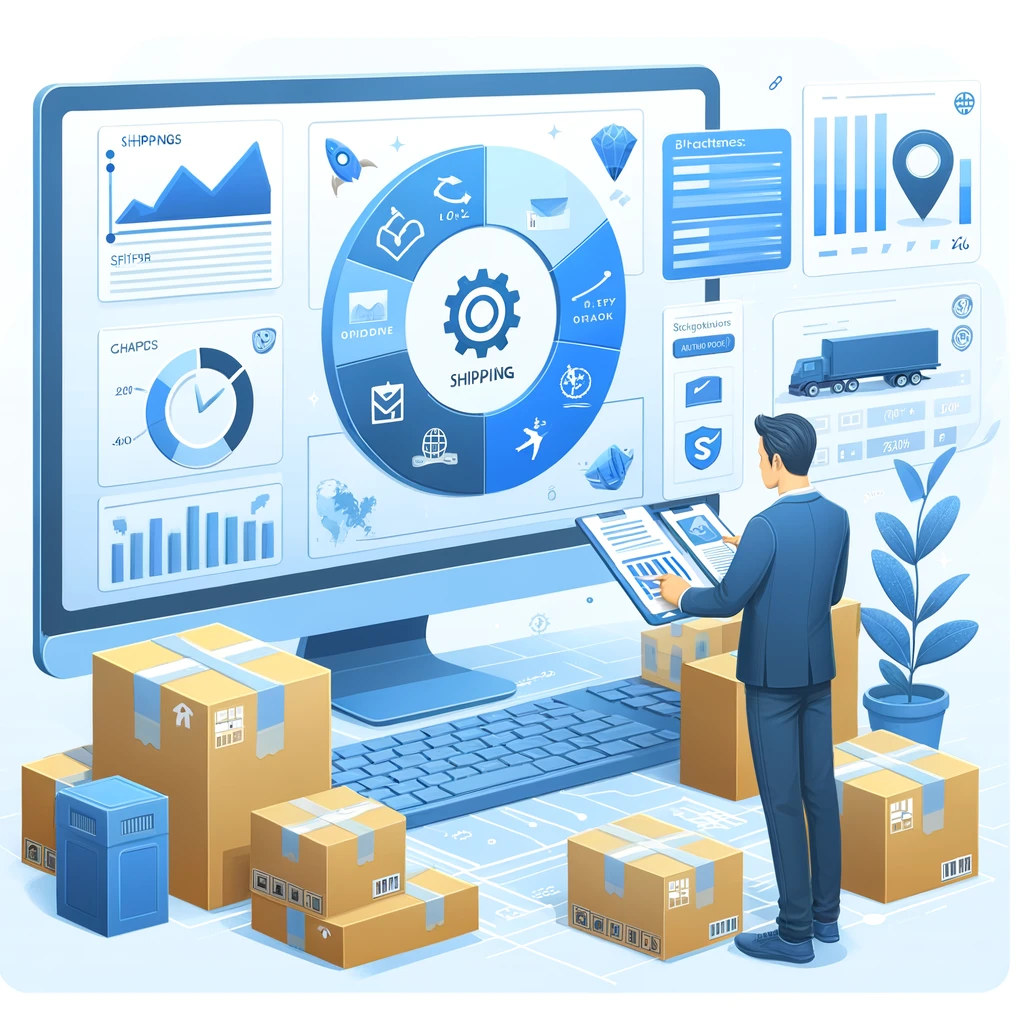How to Determine and Optimize Shipping Costs: A Comprehensive Guide

Introduction
Accurately determining shipping costs is a challenge that every e-commerce business faces. It’s a delicate balance: set prices too high, and you risk losing customers; set them too low, and you eat into your profits. The impact of shipping costs extends beyond just the bottom line – it significantly influences customer satisfaction and loyalty.
Factors Influencing Shipping Costs
Before we dive into how to determine shipping costs, it’s important to understand the factors that influence them:
- Weight and Dimensions of the Package
- Actual weight
- Dimensional weight (for larger, lighter packages)
- Shipping Distance and Zones
- Domestic vs. international shipping
- Shipping zones within countries
- Shipping Speed and Service Level
- Standard shipping
- Expedited shipping
- Overnight or same-day delivery
- Special Handling Requirements
- Fragile items
- Hazardous materials
- Temperature-sensitive goods
- Fuel Surcharges and Additional Fees
- Residential delivery fees
- Signature required fees
- Peak season surcharges
Step-by-Step Guide to Determine Shipping Costs
- Accurately Measure and Weigh Your Products
- Use a reliable postal scale
- Measure length, width, and height
- Understand Different Carrier Pricing Structures
- USPS, FedEx, UPS, DHL, etc.
- Compare rate cards and pricing tiers
- Consider All Additional Fees and Surcharges
- Fuel surcharges
- Residential delivery fees
- Oversized package fees
- Factor in Packaging Costs
- Boxes, envelopes, padding materials
- Custom packaging for branding
- Account for Handling and Fulfillment Expenses
- Labor costs for packing
- Warehouse overhead
Pro Tip: Linbis offers tools that can automate much of this process, pulling in real-time carrier rates and factoring in all relevant surcharges and fees.
Tools and Resources for Shipping Cost Estimation
- Online Shipping Calculators
- Carrier-specific calculators (USPS, FedEx, UPS)
- Third-party calculators for comparison
- Shipping Rate Comparison Tools
- Platforms like Shipstation or Shippo
- Linbis’s built-in rate comparison feature
- Carrier-Specific Resources
- API integrations for real-time rates
- Negotiated rate tables for high-volume shippers
Strategies for Optimizing Shipping Costs
- Negotiate Rates with Carriers
- Leverage your shipping volume for discounts
- Consider exclusivity agreements for better rates
- Use Multiple Carriers for Different Types of Shipments
- Choose the most cost-effective carrier for each package
- Linbis can automatically select the best carrier based on your criteria
- Implement Efficient Packaging Practices
- Use appropriate box sizes to avoid dimensional weight charges
- Invest in quality packaging to reduce damage and returns
- Leverage Flat Rate Shipping Options
- Simplify pricing for customers
- Can be cost-effective for heavier items
- Consider Regional Carriers for Certain Areas
- Often cheaper for short-distance shipping
- Can offer faster delivery times
How to Charge for Shipping: Different Approaches
- Free Shipping Strategies
- Set a minimum order value for free shipping
- Build shipping costs into product prices
- Flat Rate Shipping
- Simple for customers to understand
- Can be profitable if set correctly
- Real-Time Carrier Rates
- Most accurate, but can be complex for customers
- Linbis can display these rates in real-time at checkout
- Table Rate Shipping
- Set rates based on order total, weight, or destination
- Offers flexibility and control
Balancing Shipping Costs and Customer Expectations
- The Psychology of Free Shipping
- 90% of consumers say free shipping is their top incentive to shop online more
- Consider offering free shipping with a minimum purchase amount
- Communicating Shipping Costs Effectively to Customers
- Be transparent about shipping costs early in the buying process
- Explain the value behind higher shipping costs (e.g., faster delivery, insurance)
- Using Shipping as a Competitive Advantage
- Offer unique options like same-day delivery or eco-friendly shipping
- Provide detailed tracking information
Advanced Techniques for Shipping Cost Optimization
- Zone Skipping
- Transport packages to a distribution center closer to the final destination
- Can significantly reduce costs for high-volume shippers
- Hybrid Shipping Services
- Combine services from multiple carriers (e.g., UPS SurePost, FedEx SmartPost)
- Often cheaper for residential deliveries
- Consolidating Shipments
- Combine multiple orders into a single shipment when possible
- Particularly useful for B2B or wholesale orders

Analyzing and Improving Your Shipping Strategy
- Key Metrics to Track
- Average shipping cost per order
- Shipping cost as a percentage of order value
- Cart abandonment rate due to shipping costs
- Using Data to Refine Your Approach
- Analyze shipping data to identify trends and opportunities
- Linbis provides detailed analytics to help you make data-driven decisions
- A/B Testing Different Shipping Options
- Test different pricing strategies to find what works best
- Monitor the impact on conversion rates and average order value
How Linbis Supports Shipping Cost Determination and Optimization
Linbis offers a comprehensive suite of tools to help businesses determine and optimize their shipping costs:
- Real-Time Rate Calculation
- Automatically pulls in rates from multiple carriers
- Factors in all relevant surcharges and fees
- Packaging Optimization
- Suggests the most cost-effective packaging based on item dimensions and weight
- Multi-Carrier Rate Comparison
- Compares rates across carriers to find the best option for each shipment
- Analytics and Reporting
- Provides detailed insights into shipping costs and trends
- Helps identify opportunities for optimization
- Automation Rules
- Set up rules to automatically choose the best shipping option based on your criteria
Case Study: An online retailer implemented Linbis’s shipping optimization tools and reduced their average shipping costs by 18% within the first three months.
Future Trends in Shipping Cost Management
- AI and Machine Learning in Shipping Cost Prediction
- More accurate cost forecasting
- Predictive analytics for optimal carrier selection
- Impact of Autonomous Vehicles on Shipping Costs
- Potential for significant cost reductions in last-mile delivery
- May change the landscape of shipping zones and pricing
- Increased Focus on Sustainable Shipping
- Growing demand for eco-friendly shipping options
- Potential for new pricing models based on environmental impact
Conclusion
Determining and optimizing shipping costs is an ongoing process that requires attention to detail, strategic thinking, and a willingness to adapt. By understanding the factors that influence shipping costs, leveraging the right tools and strategies, and staying informed about industry trends, you can develop a shipping strategy that satisfies customers while protecting your bottom line.
Remember, the key to success lies in continuous analysis and improvement. Regularly review your shipping data, stay open to new strategies, and don’t hesitate to leverage advanced tools like those offered by Linbis to streamline your processes and make data-driven decisions.
Are you ready to take control of your shipping costs and optimize your e-commerce operations? Explore how Linbis can provide the insights and tools you need to navigate the complex world of shipping costs and drive your business forward.
